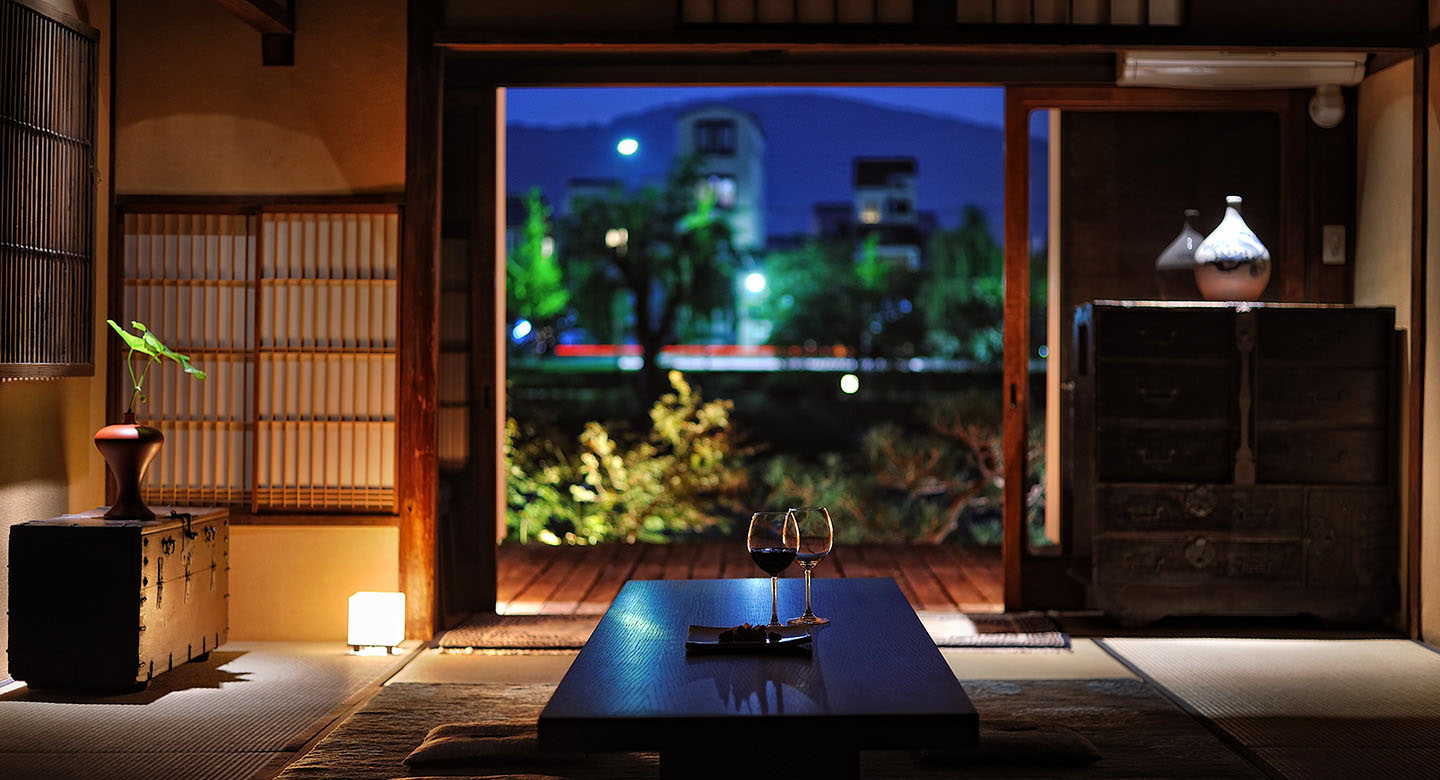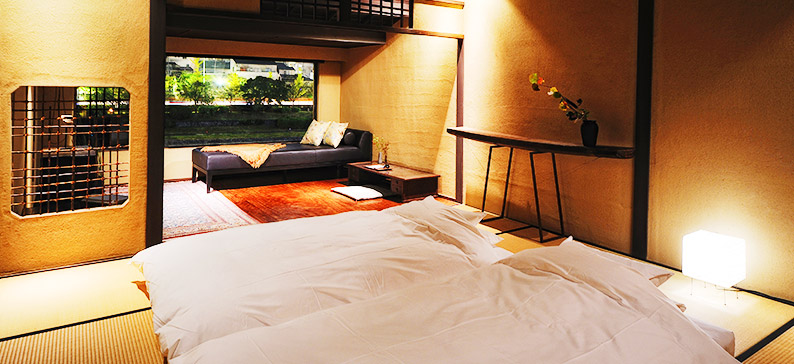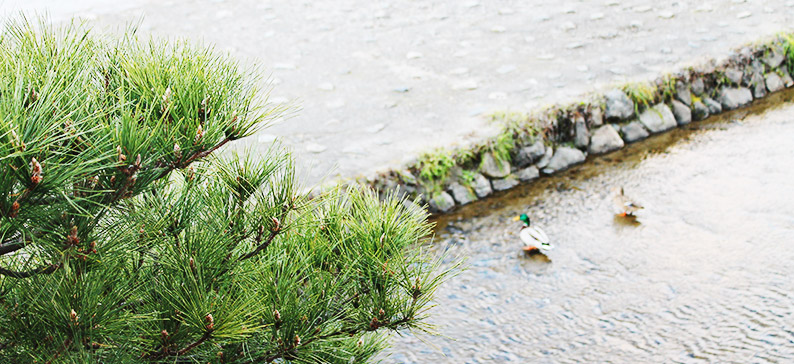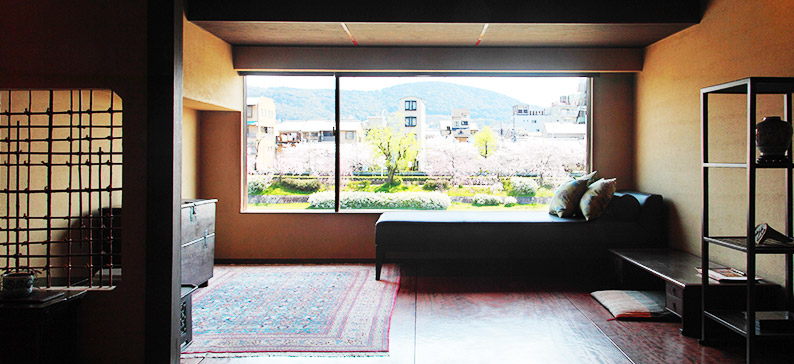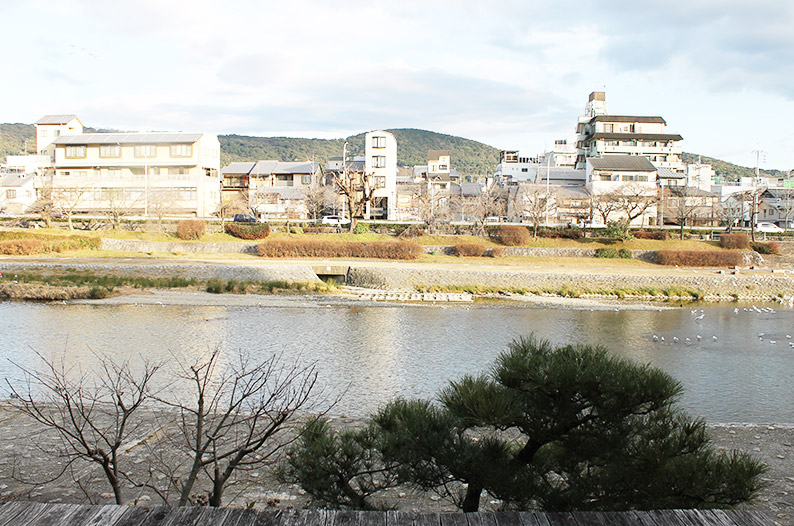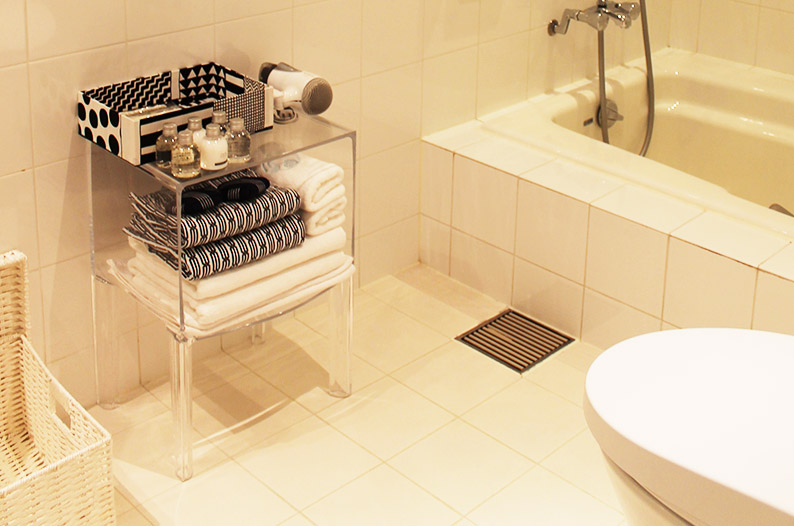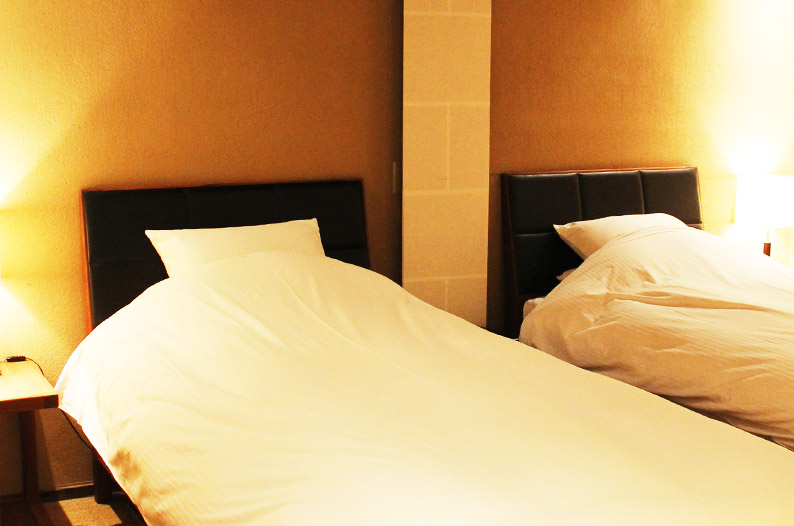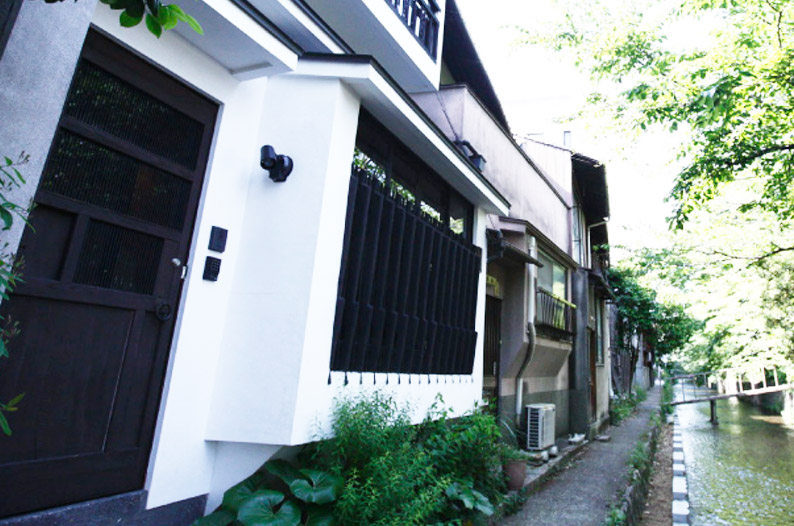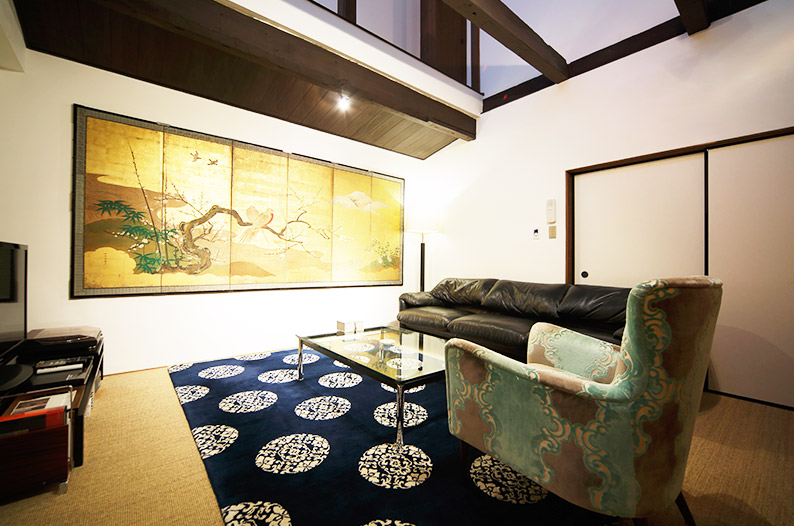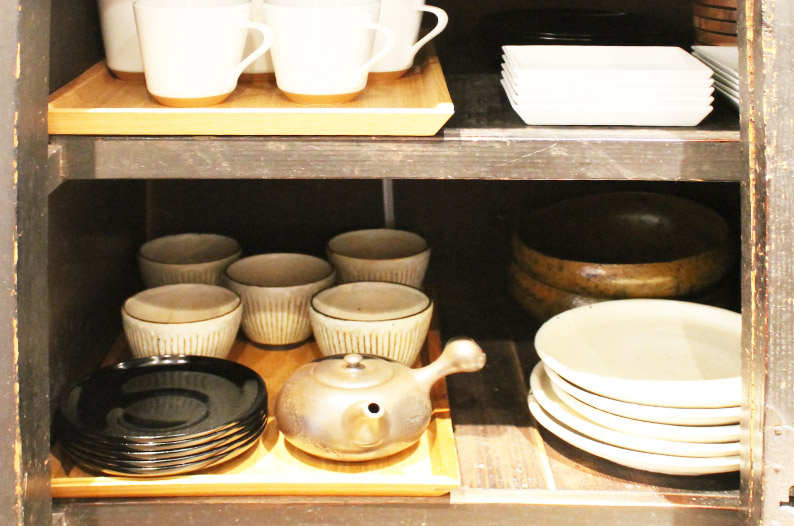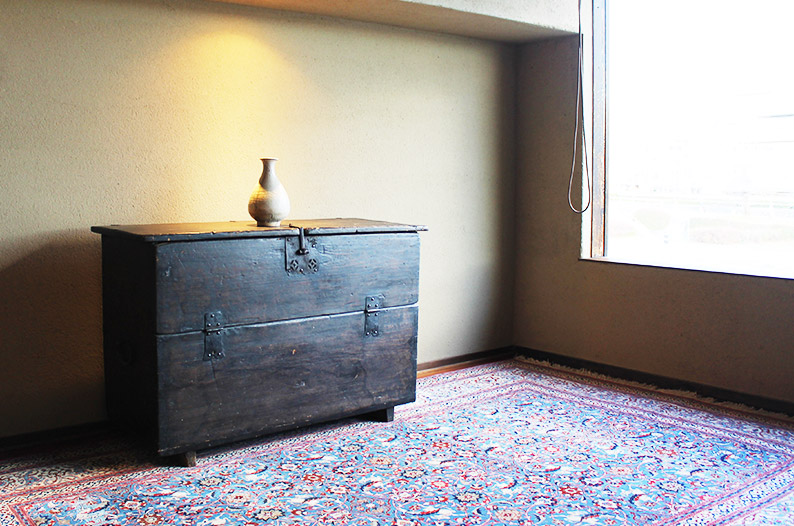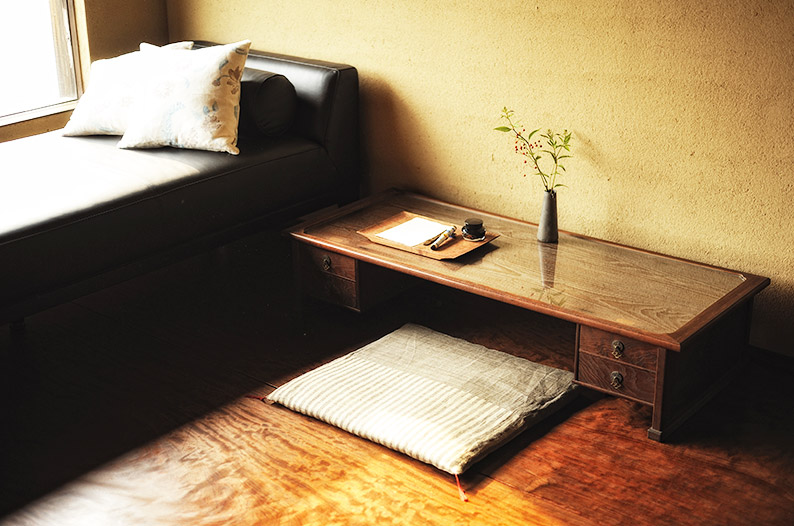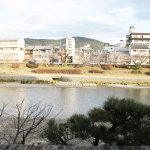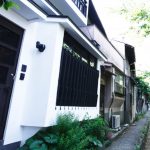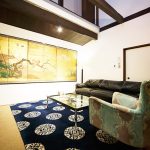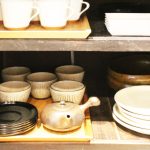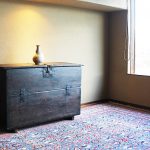Aoi KYOTO STAY
In the ancient Imperial capital of Kyoto, the past and the future intersect. Aoi KYOTO STAY is the perfect place to experience what it might be like to live in this enchanting city.
KYOTO
Live Like a Local in a Traditional Merchant Home
In the ancient Imperial capital of Kyoto, the past and the future intersect. With over 1,200 years of history, 2,000 temples and shrines, century-old restaurants and traditional inns, fancy shops and quaint cafes, artisanal crafts and art perfected with Japanese aesthetic, there is never enough time to see it all. Visitors are often overcome with the desire to live here.
Aoi KYOTO STAY is just the kind of inn to get a taste of what it might be like to live in this enchanting city. Aoi’s rental homes are all 80-year-old machiya, or traditional merchant homes, where families both lived and ran their businesses. With some of the original furnishings and intricate details throughout, the imagination runs wild with scenes of life in the merchant home. A tough choice between six homes, all uniquely stylish and endearing, I choose Kamogawa-Tei.
Located in a residential area and adjacent to its namesake, the Kamogawa River, Aoi KYOTO STAY’s Kamogawa-Tei stands quietly but with dignity. At the front entrance stands the old warehouse door, decorated with intricate metal pieces. Going through the narrow entrance, I’m surprised by how far back the space goes. These typical Kyoto dwellings were called “eel’s beds” – their narrow but long layout were said to be perfect for eels to sleep.
Entering the room, the first thing that jumps into sight is the view. The simple glass window gently frames the elegant Kamogawa River. This is exactly the view I wanted. Immediately, I fall in love with this place. Standing barefoot on the wooden balcony, I’m struck with the illusion that I’m actually standing on the riverbank. A pure luxury to be this close to the river. On hot and humid summer days, locals enjoy the coolness of the river from these wooden balconies.
From this balcony in the heart of Kyoto, I see cormorants, ducks and seagulls playing on the surface of the river. Kawashima-san, Aoi’s manager, laughs and says, “If you wave to them, they often come, thinking you have something to give them.” On the other side of the Kamogawa, cars come and go. I don’t tire of listening to the murmur of the water and watching Kyotoites strolling along the riverside.
Upstairs, there is another VIP seat. Lying down on the black cloth couch, I enjoy a panorama of the Kamogawa River. There is a Japanese saying about rivers: “The river flows ceaselessly, yet the water is never the same.”
Kyoto being a valley, the surrounding mountains drop their shadows at dusk on this magical city, transforming the light into shades of red before melting into the night. When Kyoto was the Imperial capital, the cultured elite composed poems about these mountains. Soaking in the view from Kamogawa-Tei, I share their sentiments. Before sunset, there is a brief moment where the sky turns ultramarine. Sitting by this window at Kamogawa-Tei, I want to become a poet.
Decorating the white wall of the downstairs living room is a giant screen spanning several meters from the later half of the Edo period (1603-1868). I feel like I’m in a museum of Japanese art – a private museum, where I can admire the art while sipping sake on the sofa.
As night falls, small restaurants and bars light their lanterns. The area around Kamogawa-Tei has countless traditional restaurants, ranging from Michelin-starred places to popular joints where Kyoto’s salary men go for a bite after work. Aoi staff give me some recommendations, making the decision less daunting.
After indulging in traditional culinary delights and savory sake, I return to Kamogawa-Tei. This time, I enjoy the night version of my favorite view. The sleeping quarters are upstairs, where guests can choose between a futon or bed. I recommend the futon, as it allows you to sleep close to the tatami, which has a calming effect. I choose not to close the blinds so that I can enjoy the quiet cityscape from my futon. The last light I see is that of the lantern, with Aoi’s family crest showing through the Japanese paper.
In the morning, colors return to the mountains and sunlight fills the room with warmth. Joggers and cyclists are already going about their morning activity along the river before the sun has completely risen. I watch the city of Kyoto wake up.
Guests who reserve more than three days in advance can enjoy breakfast in their room. There are three choices: a Western breakfast with bread and salad, or two types of traditional Japanese breakfast – rice porridge or Buddhist vegetarian.
If travelling is to seek the extraordinary, experiencing the local lifestyle may be the most extraordinary thing. Surrounded by typical Kyoto residences, Kamogawa-Tei is the ideal place to live like a local. When your eyes meet those of the neighbor on the wooden balcony, you might find yourself greeting someone who lives on the other side of the world from you; someone with whom you happen to share the same view at this fleeting moment. By the time you close the old warehouse door at the front entrance, you may just feel like a Kyoto local.
by Kana Yanagihara, translated by Maho Harada
April 30, 2016
Aoi KYOTO STAY information
Address
145-1 Tenno-cho,Bukkoji-agaru,Kiyamachi-dori,Shimogyo-ku
TEL:+81-75-354-7770
http://www.kyoto-stay.jp/
| Number of rooms | 12 |
|---|---|
| Internet | wifi available |
| Credit card | ok |
| Check in/out | in 2:00pm out 10:00 |
| Language | English available |
| Price range |
Additional Information about Aoi KYOTO STAY
No restaurant in the hotel
Recommended restaurants
Tenyu (Tempura) - 299 Shimo Hakusan-cho, Nakagyo-ku, Kyoto-shi - TEL: 075-212-7778
Tominokoji Yamagishi (Traditional Japanese) - 560 Tomino-koji, Rokakusa-garu, Honeyano-cho, Nakagyo-ku, Kyoto-shi - TEL: 075-708-7865
Miyazawa (Traditional Japanese) - 553-1 Yaoya-cho, Nakagyo-ku, Kyoto-shi - TEL: 075-213-1326
Soujiki Nakahigashi (Traditional Japanese) - 32-3 Jodo-dera, Ishibachi-cho, Sakyo-ku, Kyoto-shi - TEL: 075-752-3500
Miyoshi (Japanese beef) - 570-15 Gionmachi Minamigawa Higashiyama-ku, Kyoto-shi - TEL: 075-561-2508
Junidanya (Sukiyaki) - 570-128 Gion-machi, Minami-gawa, Higashiyama-ku, Kyoto-shi - TEL: 075-561-0213
Mizai (Traditional Japanese) - 613 Maruyama-cho, Yasakatorii-mae, Higashi-iru, Higashiyama-ku, Kyoto-shi - TEL: 075-551-3310
Sayura (Wine bar) - 570-120 Gion-machi, Minami-gawa, Higashiyama-ku, Kyoto-shi - TEL: 075-551-1599
- TOPSTAYAoi KYOTO STAY
- TOPDESTINATIONSKYOTOAoi KYOTO STAY
